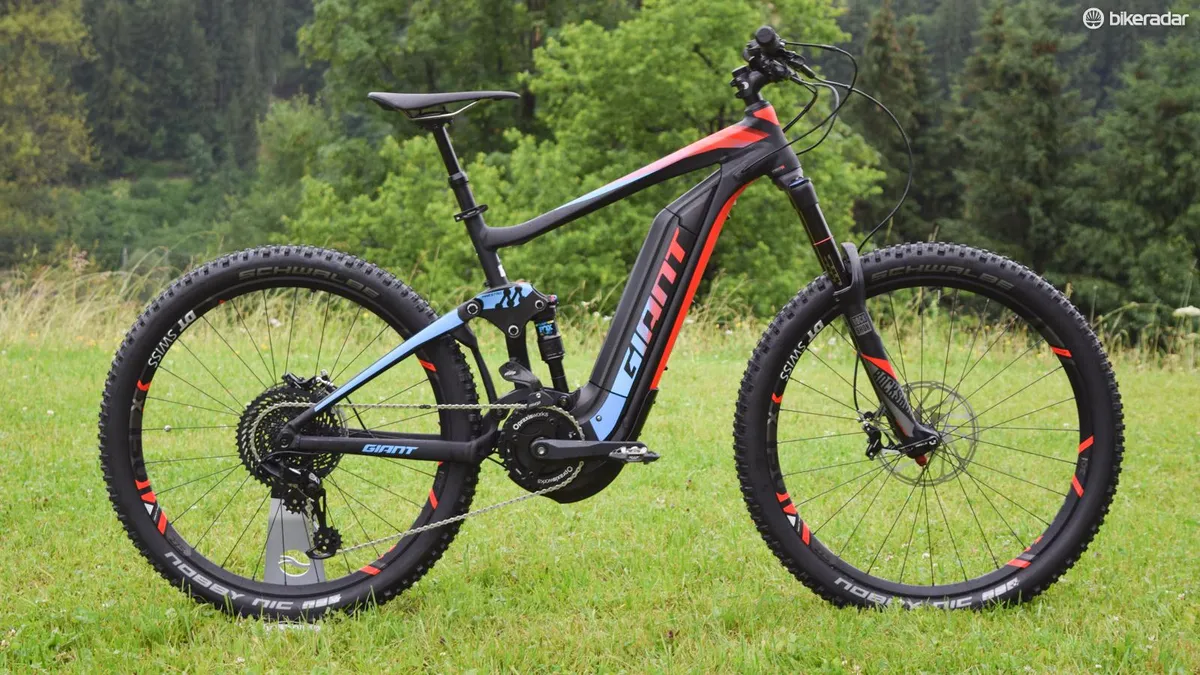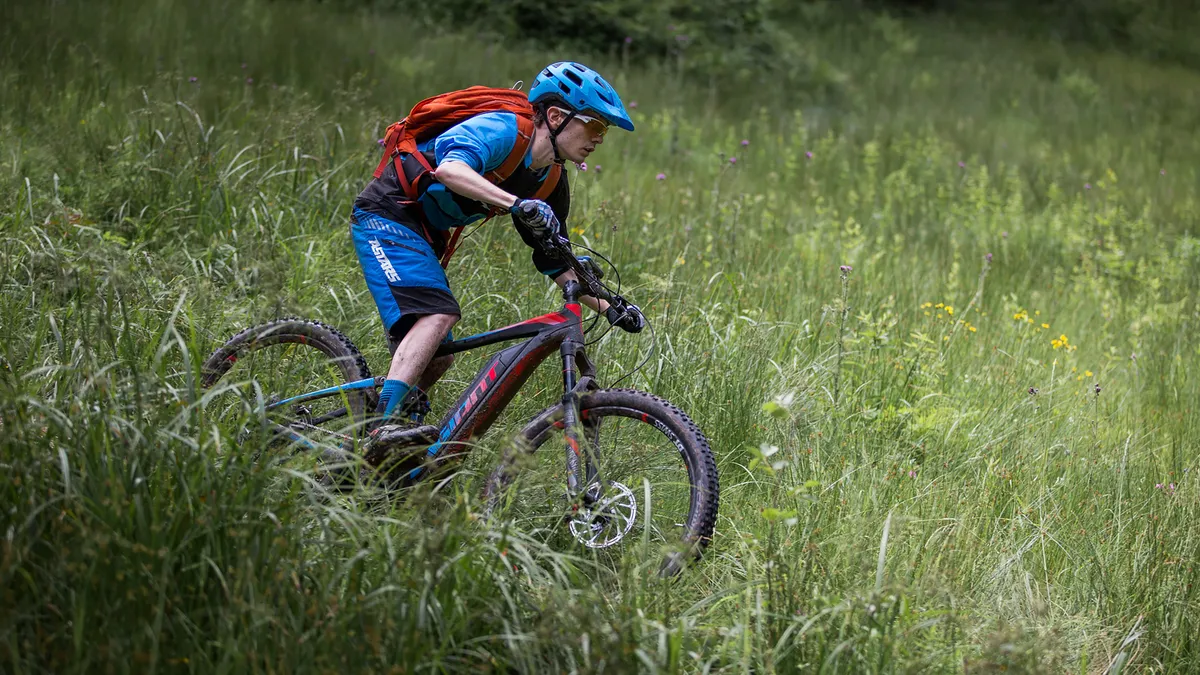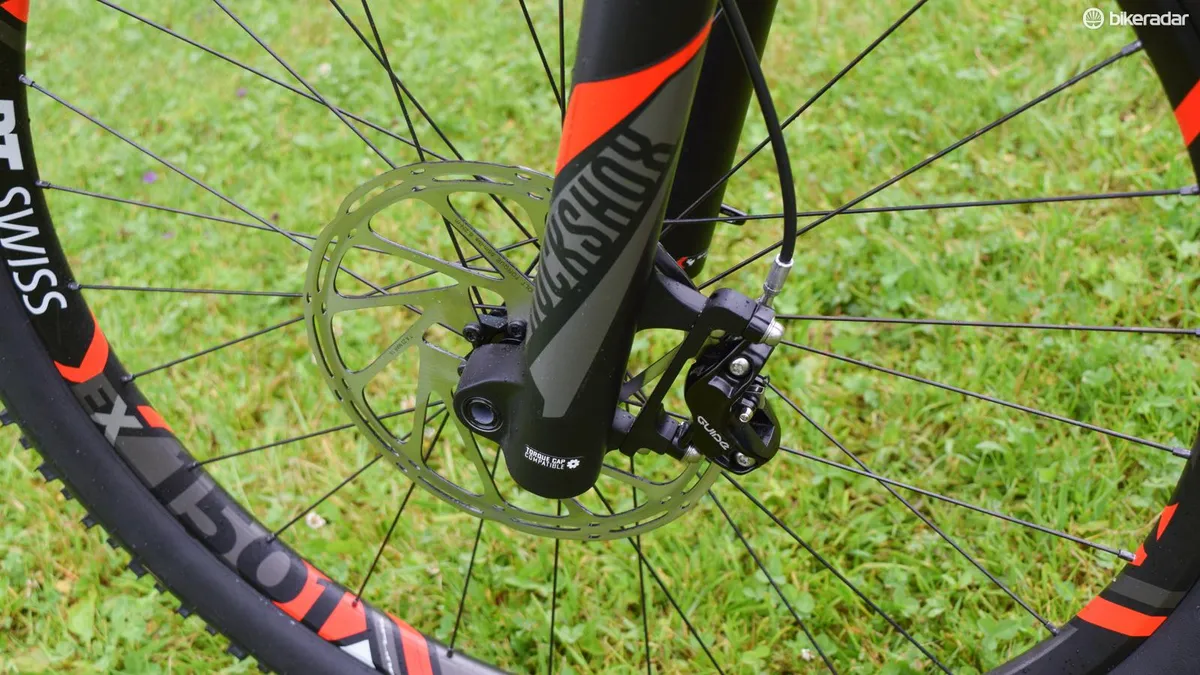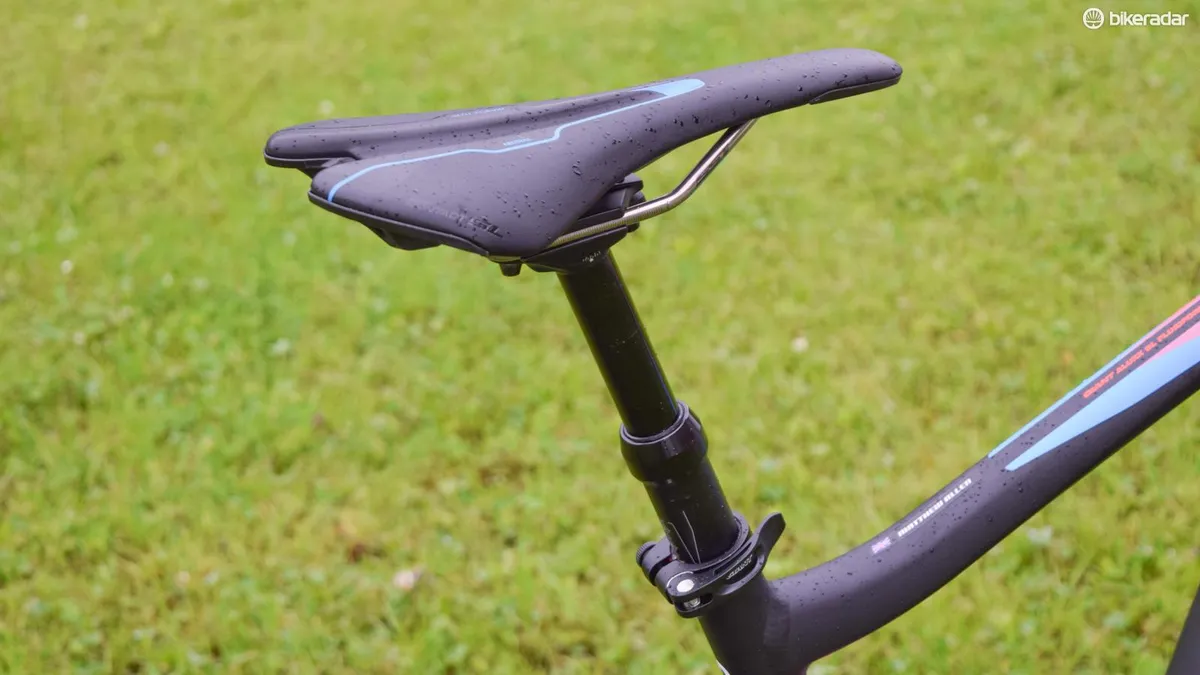E-bikes! Are you sick of them yet? Well, tough, because they’re certainly here to stay. Giant has been making them for a while, but the brand’s 2017 range takes things to the next level with all-new frames and refined specs. BikeRadar was in Austria recently to try out the new Full-E+ trail machine in its top spec – read on for our initial impressions.
The bike: more integration, updated suspension
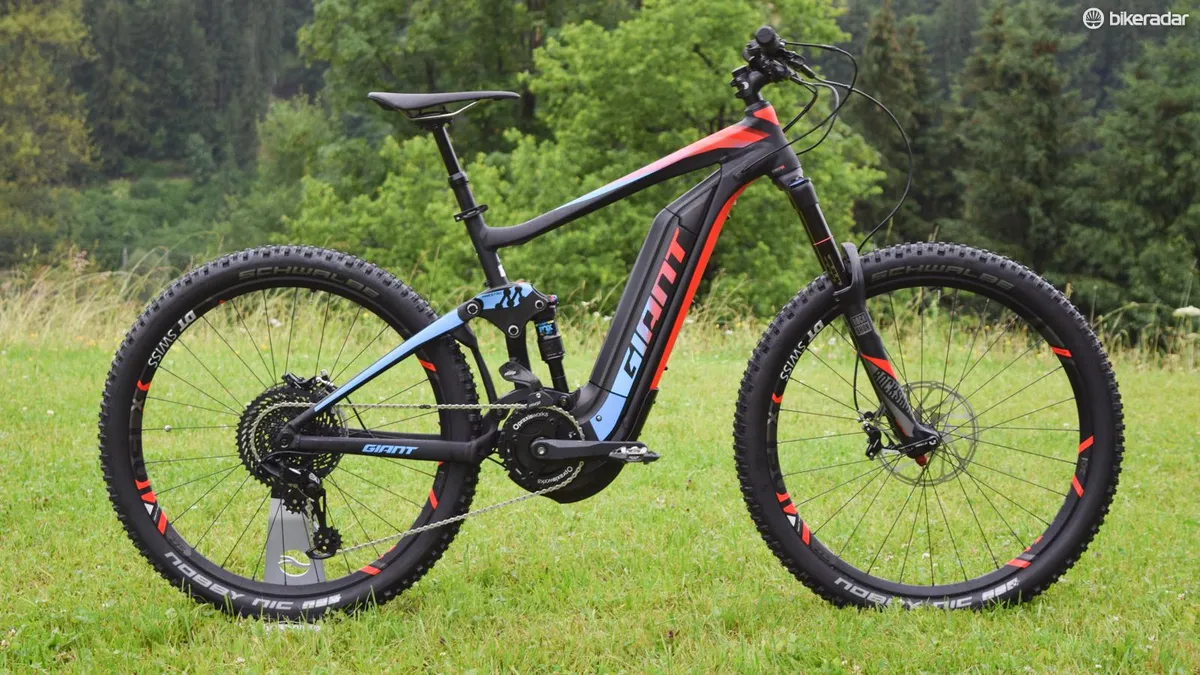
While the old Full-E+ looked like a standard mountain bike with an oversized bottom bracket shell and a box stuck to its down tube, it’s all about integration with the latest model. The large ‘EnergyPak’ battery combines almost seamlessly with the frame, completing its lines rather than interrupting them, while up front the RideControl switch unit is integrated with the left grip’s lock ring. The matching head unit is a cleaner, more robust-looking piece of design too.

The Full-E+ is powered by a Yamaha SyncDrive motor with a nominal output of 250W (peak power will be considerably more) and 80Nm of torque. On the top spec build I tested, it’s married to SRAM’s EX1 groupset, a 1x8 setup that’s optimised for the loads imposed by an electric drivetrain.
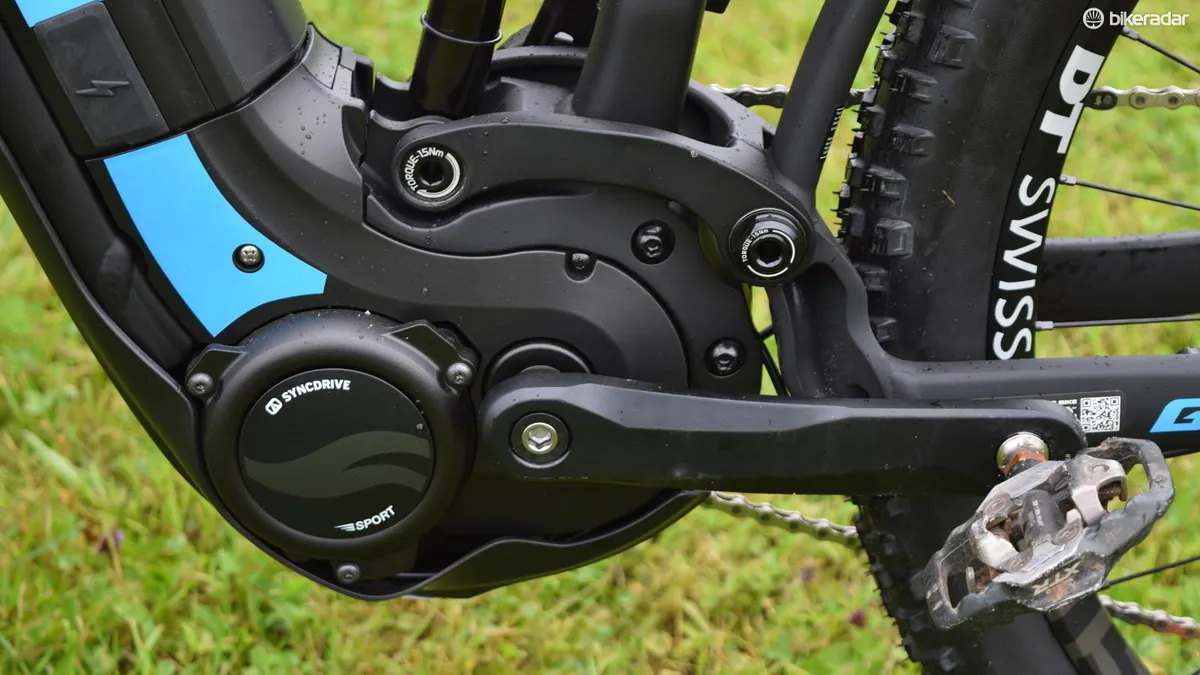
Inasmuch as it’s also a 27.5in-wheeled trail bike, the Full-E+ bears a strong resemblance to Giant’s Trance. But as with the new Road-E+ it’s actually an entirely separate design with its own geometry.
The power unit necessitates longer chainstays (463mm across all sizes) and to help keep the wheelbase from being excessively long, Giant uses a shorter top tube than on the Trance to compensate (10mm on a medium). The head tube is 25mm taller on a medium too, a reflection of the expectation that e-bike riders will want a slightly less aggressive fit.
The frame itself is Giant’s usual top-notch hydroformed alloy, and it debuts an update to Giant’s Maestro suspension platform in the form of a slick forged composite linkage that’s designed for the new trunnion-mount metric-sized shocks. Forged composites are considerably more expensive to manufacture than standard metal parts, but Giant reckons the weight and stiffness advantages make them worthwhile for selected components.

With 140mm of rear travel, our test bikes at the launch were fitted with Fox rear shocks, but in this spec production bikes are expected to have RockShox SuperDeluxe RCT3 units instead, to match the 160mm Lyrik fork up front. Speaking of new(ish) standards, the designers have also opted for wider Boost 148/110 axles – no bad thing on a bike weighing a claimed 22kg.
It might come as a surprise that the Full-E+ frame accepts a front derailleur, but Euro riders still harbour an affection for 2x and 3x setups, and the two cheaper models (the Full-E+ 1 and 2) both ship with Shimano double groupsets.
The ride: it pulls like a train, but descends like one too

The beauty of riding an e-MTB is that you’ve got your own onboard uplift, and it’s here that the Full-E+ excels. It has three power modes (Eco, Normal, Power in ascending order of the level of assistance offered) and as we were undertaking a modest ride with the promise of a change of batteries halfway round, I naturally opted for Power – rude not to, eh?
As it turned out, being skinny makes a huge difference to your battery life, and when we came to swap EnergyPaks mine was still on 58%, while heavier riders had run theirs down to somewhere in the twenties.
Set to Power, the Full-E+ has enough poke that even on quite steep climbs you can sit back and let the bike do the heavy lifting, pedalling gently to activate the assist. The system seems to be calibrated to deliver the most power at a cadence of around 70rpm which seems a touch slow, but I found myself adapting quickly.
Our test ride covered a wide variety of terrain and it highlighted both the strengths and weaknesses of a bike like this. Early on, we tackled a very steep, grassy off-road climb that, thanks to rainfall in the preceding 24 hours, offered minimal traction.
It was an ascent that I simply wouldn’t have attempted on a normal bike as it would have been completely miserable, but the Full-E+ made it possible, if not exactly easy, churning its way up. Because the assist lets you go that much faster, uphill technical sections take on a new dimension, and I found myself thinking more about my lines and less about simply surviving a tough climb.

The problem with riding like this is that while the e-bike encourages you to undertake such acts of folly, it will make your life a misery if things go pear-shaped and you’re forced to stop part way up. Getting going again is remarkably difficult as you need to time your first pedal stroke perfectly to avoid being thrown off line by the surge of power from the assist.
Giant now includes a ‘walk’ function to make pushing up easier, but on a steep hill with traction in short supply, it’s all but useless as the rear tyre simply won’t grip without the weight of a rider on it, and it doesn’t give you all that much power anyway. Also, the button to activate it isn’t particularly ergonomic – it’s hard to keep it pressed while you’re pushing a heavy bike up a steep hill.
Downhill, the considerable weight of the Full-E+ is a double-edged sword. On the one hand it lends the bike a truly planted feel, for want of a better cliché – it takes a lot to knock it off its line. On the other, the mass just makes it a whole lot less nimble than a conventional trail bike, and in combination with a long rear end that discourages playfulness, technical sections just aren’t as enjoyable as they could be.
I found myself flying through rough stuff and letting the suspension do the work rather than trying to be too clever because the reward wasn’t there, and over smaller jumps there’s a palpable sense that the bike doesn’t really want to get airborne.
On smooth, flowing terrain the Full-E+ seems to make more sense. It breezes up the climbs and steams back down the hills like a freight train, the weight lending it a certain unflappable stability. The 25km/h limiter on the assist (on the Euro spec model) means that you won’t be getting any help from the motor when the trail points downwards, but gravity is more than happy to take over.

The SRAM EX1 groupset was very impressive. My limitless incompetence in the realm of gnar meant that I subjected it to all sorts of abuse, crashing through the gears with abandon, but it shrugged it all off without complaint. The matching Guide RSC brakes were a welcome spec choice too, offering great modulation and no shortage of power with 200mm rotors front and rear.
Otherwise there was little to note about the spec – I didn’t ride the bike enough to get the suspension properly dialled but I had no complaints, save for a slight lack of feedback from the rear that I put down to the weight of the bike. Oh, and the Giant dropper worked well, but it could have used a bit more travel as I found myself competing for space with the saddle on the steeper stuff.
Early verdict
We’ve debated e-bikes at length in recent weeks on BikeRadar, and experience tells me that the Full-E+ isn’t likely to alter anyone’s deeply-held beliefs on the subject. It is, however, a very capable machine that lets you climb the un-climbable and stay fresh for the descents. My test ride was 30km long and included 1543 vertical metres of ascent, enough that on a normal bike I’d have pretty done-in for the day. Thanks to the assist, I still had enough energy to go and do this afterwards.
If you live for ultra-technical, natural trails then the Full-E+ is probably not for you. It’s never going to feel dainty and precise on the descents, but if you simply want a bike that lets you go further with less effort, or which lets you do more of the fun stuff by getting the climbs over with more quickly, then the Full-E+ is worth a look.
In this spec it’s generally hard to fault, and the amount of power on offer from the Yamaha motor is genuinely impressive. It’s not mountain biking as we know it, but I can’t pretend I didn’t have a lot of fun on the Full-E+.
Pricing and availability
The Full-E+ range is expected to be available in September, with pricing in all markets to be confirmed.
Note: there are small variations in spec according to region. The production Full-E+ SX will have a RockShox rear shock in place of the Fox unit.


